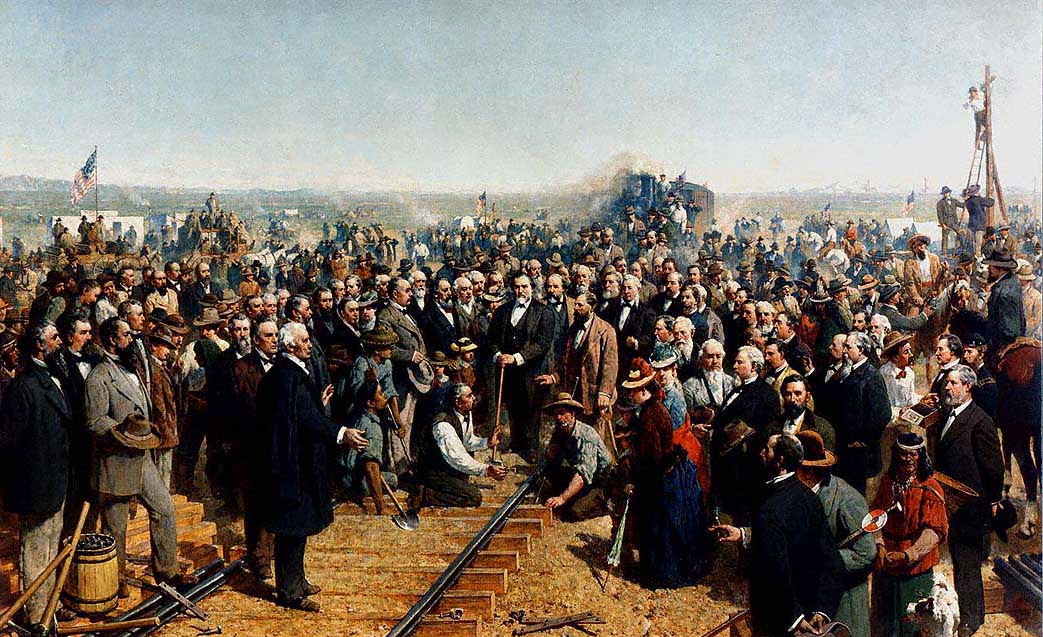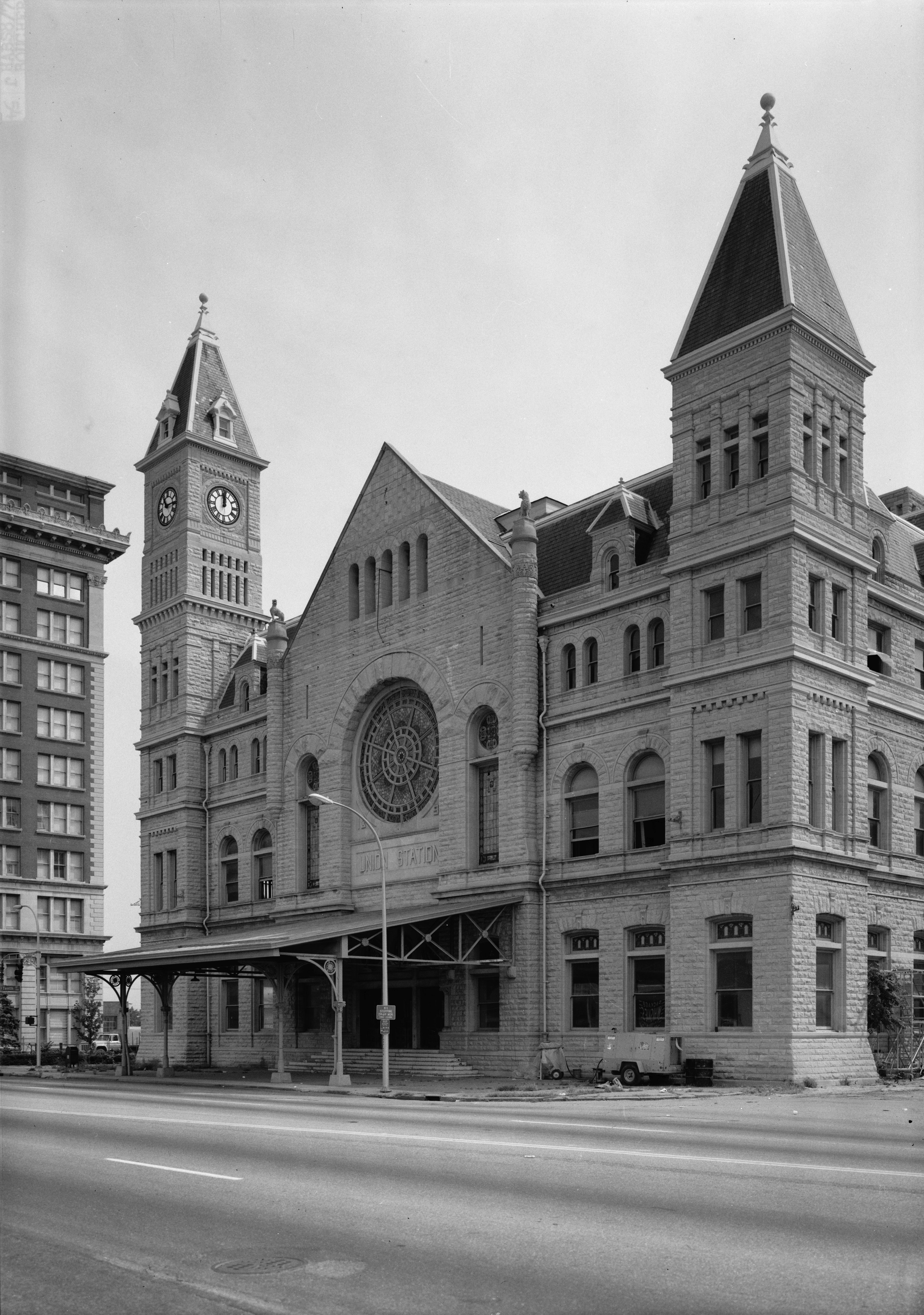|
EMD SDP35
The EMD SDP35 is a model of 6-axle diesel-electric locomotive built by General Motors Electro-Motive Division between July 1964 and September 1965. Power was provided by an EMD 567D3A 16-cylinder engine which generated . Essentially this locomotive was an EMD SD35 equipped with a steam generator, located in the extended long hood end, for passenger use. 35 examples of this locomotive model were built for American railroads. History With its older E-units reaching the end of their serviceable lives, Seaboard Air Line asked EMD for a passenger version of the SD35 that could double as a freight unit, especially if passenger trains continued to be discontinued. EMD came up with the SDP35, and SAL placed an order, trading in E4 and E6 units. The first of SAL's new SDP35s was delivered in summer 1964. Eventually the SDP35 wound up going to four railroads: SAL (20, numbered 1100–1119), Atlantic Coast Line (1, numbered 550), Louisville and Nashville (4, numbered 1700–1703) ... [...More Info...] [...Related Items...] OR: [Wikipedia] [Google] [Baidu] |
Seaboard Coast Line
The Seaboard Coast Line Railroad was a Class I railroad company operating in the Southeastern United States beginning in 1967. Its passenger operations were taken over by Amtrak in 1971. Eventually, the railroad was merged with its affiliate lines to create the Seaboard System in 1983. At the end of 1970, SCL operated 9,230 miles of railroad, not including A&WP-Clinchfield-CN&L-GM-Georgia-L&N-Carrollton; that year it reported 31,293 million ton-miles of revenue freight and 512 million passenger-miles. History The Seaboard Coast Line emerged on July 1, 1967, following the merger of the Seaboard Air Line Railroad with the Atlantic Coast Line Railroad. The combined system totaled , the eighth largest in the United States at the time. The railroad had $1.2 billion in assets and revenue with a 54% market share of rail service in the Southeast, facing competition primarily from the Southern. The seemingly redundant name resulted from the longstanding short-form names of these two m ... [...More Info...] [...Related Items...] OR: [Wikipedia] [Google] [Baidu] |
C-C Locomotives
CC, cc, or C-C may refer to: Arts, entertainment, and media Fictional characters * C.C. (''Code Geass''), a character in the ''Code Geass'' anime series, pronounced "C-two" * C.C. Babcock, a character in the American sitcom ''The Nanny'' * Comedy Chimp, a character in ''Sonic Boom'', called "CC" by Doctor Eggman Gaming * ''Command & Conquer'' (''C&C''), a series of real-time strategy games and the first game in the series * Crowd control (video gaming), the ability to limit the number of mobs actively fighting during an encounter Other arts, music, entertainment, and media * Cannibal Corpse, an American death metal band. * CC Media Holdings, the former name of iHeartMedia * Closed captioning, a process of displaying text on a visual display, such as a TV screen * Comedy Central, an American television network (URL is cc.com) Brands and enterprises Food and drink * Canadian Club, a brand of whisky * CC's, a tortilla chip brand in Australia Other companies * Stylized inter ... [...More Info...] [...Related Items...] OR: [Wikipedia] [Google] [Baidu] |
National Railroad Museum And Hall Of Fame
The National Railroad Museum and Hall of Fame is a transportation museum in Hamlet, North Carolina. It opened in 1976Visit North Carolina retrieved 5/27/2013. and is adjacent to the restored 1900 passenger station.Washburn, Mark. (2013, May 26) . The Charlotte Observer: retrieved 5/27/2013. The museum features an 1898 map of the that lights up key routes. Other exhibits demonstrate how [...More Info...] [...Related Items...] OR: [Wikipedia] [Google] [Baidu] |
Hamlet, North Carolina
Hamlet is a city in Richmond County, North Carolina, United States. The population was 6,042 at the 2020 census. History The area in Richmond County which presently includes Hamlet was originally known as Sandhills. The Wilmington, Charlotte & Rutherford Railroad was extended through the area in 1866. The first house was constructed there in 1869. In 1872 the land was purchased by John Shortridge, an English immigrant who intended on building a textile mill along a creek. He renamed the locale Hamlet the following year, supposedly in homage to hamlets in the British Isles. He planted a sycamore tree to celebrate the occasion, which stood until 1946. A post office was established in 1876, and that year Shortridge sold a parcel of land to Raleigh and Augusta Air Line Railroad, which completed its own line through Hamlet by the following year. Railway shops were built in 1894 and the town was formally incorporated on February 9, 1897. Seaboard Air Line Railroad decided to esta ... [...More Info...] [...Related Items...] OR: [Wikipedia] [Google] [Baidu] |
Union Pacific Railroad
The Union Pacific Railroad , legally Union Pacific Railroad Company and often called simply Union Pacific, is a freight-hauling railroad that operates 8,300 locomotives over routes in 23 U.S. states west of Chicago and New Orleans. Union Pacific is the second largest railroad in the United States after BNSF, with which it shares a duopoly on transcontinental freight rail lines in the Western, Midwestern and Southern United States. Founded in 1862, the original Union Pacific Rail Road was part of the first transcontinental railroad project, later known as the Overland Route. Over the next century, UP absorbed the Missouri Pacific Railroad, the Chicago and North Western Transportation Company, the Western Pacific Railroad, the Missouri–Kansas–Texas Railroad and the Chicago, Rock Island and Pacific Railroad. In 1996, the Union Pacific merged with Southern Pacific Transportation Company, itself a giant system that was absorbed by the Denver and Rio Grande Western R ... [...More Info...] [...Related Items...] OR: [Wikipedia] [Google] [Baidu] |
Louisville And Nashville Railroad
The Louisville and Nashville Railroad , commonly called the L&N, was a Class I railroad that operated freight and passenger services in the southeast United States. Chartered by the Commonwealth of Kentucky in 1850, the road grew into one of the great success stories of American business. Operating under one name continuously for 132 years, it survived civil war and economic depression and several waves of social and technological change. Under Milton H. Smith, president of the company for 30 years, the L&N grew from a road with less than of track to a system serving fourteen states. As one of the premier Southern railroads, the L&N extended its reach far beyond its namesake cities, stretching to St. Louis, Memphis, Atlanta, and New Orleans. The railroad was economically strong throughout its lifetime, operating freight and passenger trains in a manner that earned it the nickname, "The Old Reliable." Growth of the railroad continued until its purchase and the tumultuous ... [...More Info...] [...Related Items...] OR: [Wikipedia] [Google] [Baidu] |
EMD SDP40
An SDP40 is a 6-axle passenger diesel-electric locomotive built by General Motors Electro-Motive Division (EMD) between June 1966 and May 1970. Design Like its predecessor in EMD's catalog, the SDP35, the SDP40 is a high-horsepower freight locomotive with equipment for passenger train service. In 1966, EMD replaced all their production units with those powered by the new 645 diesel. They included six-axle models SD38, SD40 and SD45, in addition to SDP40. All had standard components including the frame, cab, generator, trucks, traction motors, and air brakes. The main difference was the power: the SD38 produced from a non-turbocharged V16, the SD40 produced from a turbocharged V16, and the SD45 produced from a turbocharged V20. The SD40 and SDP40 were so similar that EMD published common operator's and service manuals to cover both. At the time most passenger locomotives needed to provide steam to the passenger cars for heating, cooking, and sometimes cooling. They ... [...More Info...] [...Related Items...] OR: [Wikipedia] [Google] [Baidu] |
EMD 567
The EMD 567 is a line of large medium-speed diesel engines built by General Motors' Electro-Motive Division. This engine, which succeeded Winton's 201A, was used in EMD's locomotives from 1938 until its replacement in 1966 by the EMD 645. It has a bore of , a stroke of and a displacement of per cylinder. Like the Winton 201A, the EMD 645 and the EMD 710, the EMD 567 is a two-stroke engine. GE now makes EMD-compatible replacement parts. History Eugene W. Kettering, son of Charles F. Kettering, joined Winton Engine in 1930. He moved to Detroit in 1936, and was a central figure in the development of the 567 and the Detroit Diesel 6-71. He moved to EMD in 1938, became Chief Engineer at EMD in 1948, then Division Director in 1956 and subsequently Research Assistant to the General Manager in 1958 until his retirement in 1960. The 567 was released in 1938.General Motors 567-C Engines ''Diesel Railway Traction'' November 1955 pages 325-332 In 1951, Eugene Kettering presented a ... [...More Info...] [...Related Items...] OR: [Wikipedia] [Google] [Baidu] |
Prime Mover (locomotive)
In engineering, a prime mover is an engine that converts fuel to useful work. In locomotives, the prime mover is thus the source of power for its propulsion. In an engine-generator set, the engine is the prime mover, as distinct from the generator. Definition In a diesel-mechanical locomotive, the prime mover is the diesel engine that is mechanically coupled to the driving wheels (drivers). In a diesel-electric locomotive, the prime mover is the diesel engine that rotates the main generator responsible for producing electricity to power the traction motors that are geared to the drivers. The prime mover can also be a gas turbine instead of a diesel engine. In either case, the generator, traction motors and interconnecting apparatus are considered to be the power transmission system and not part of the prime mover. A wired-electric or battery-electric locomotive has no on-board prime mover, instead relying on an external power station. Weight distribution The power unit ... [...More Info...] [...Related Items...] OR: [Wikipedia] [Google] [Baidu] |
EMD 645
The EMD 645 is a family of diesel engines that was designed and manufactured by the Electro-Motive Division of General Motors. While the 645 series was intended primarily for locomotive, marine and stationary engine use, one 16-cylinder version powered the 33-19 "Titan" prototype haul truck designed by GM's Terex division. The 645 series was an evolution of the earlier 567 series and a precursor to the later 710 series. First introduced in 1965, the EMD 645 series remained in production on a by-request basis long after it was replaced by the 710, and most 645 service parts are still in production. The EMD 645 engine series is currently supported by Electro-Motive Diesel, Inc., which purchased the assets of the Electro-Motive Division from General Motors in 2005. In 1951, E. W. Kettering wrote a paper for the ASME entitled, ''History and Development of the 567 Series General Motors Locomotive Engine'', which goes into great detail about the technical obstacles that were e ... [...More Info...] [...Related Items...] OR: [Wikipedia] [Google] [Baidu] |




